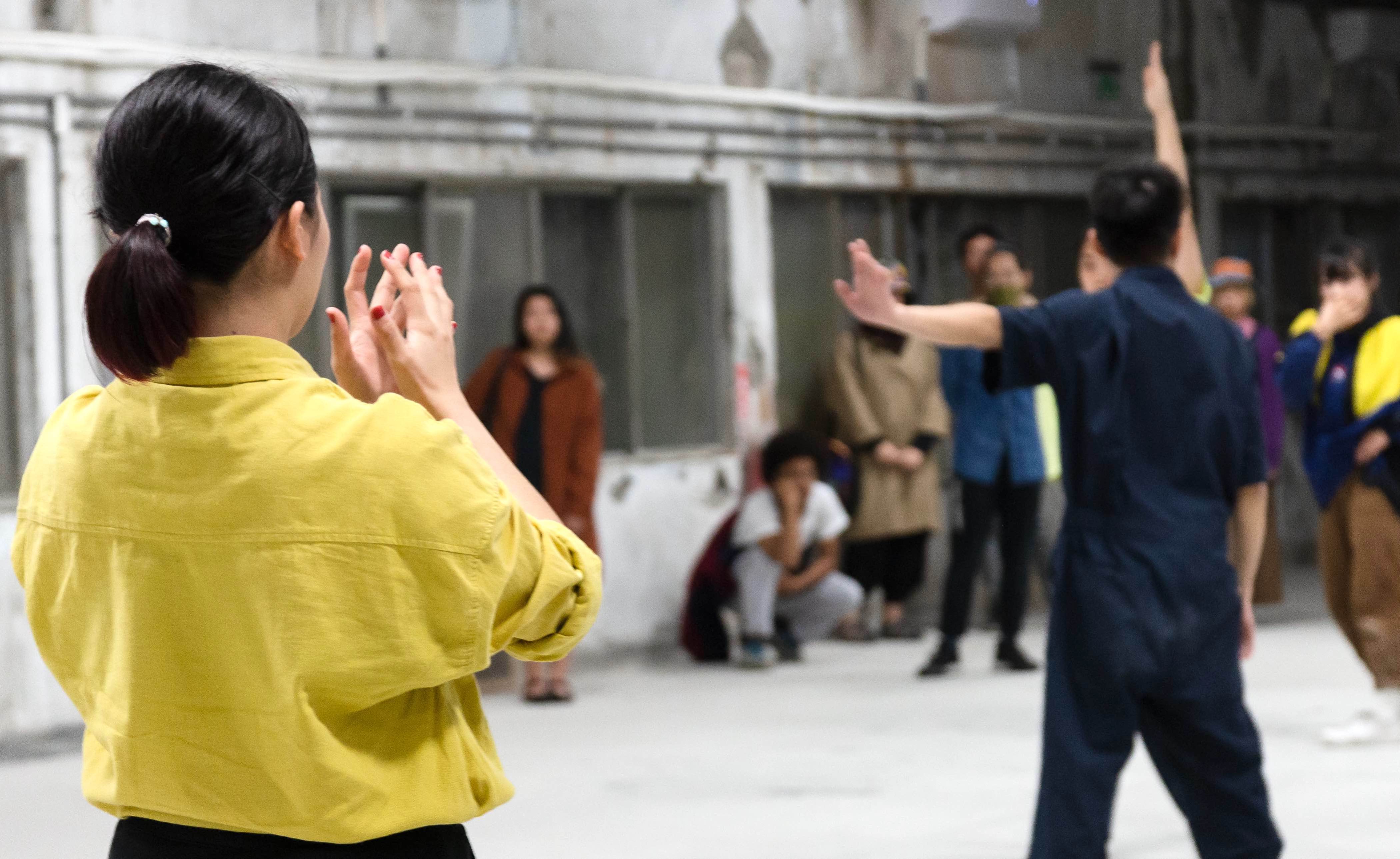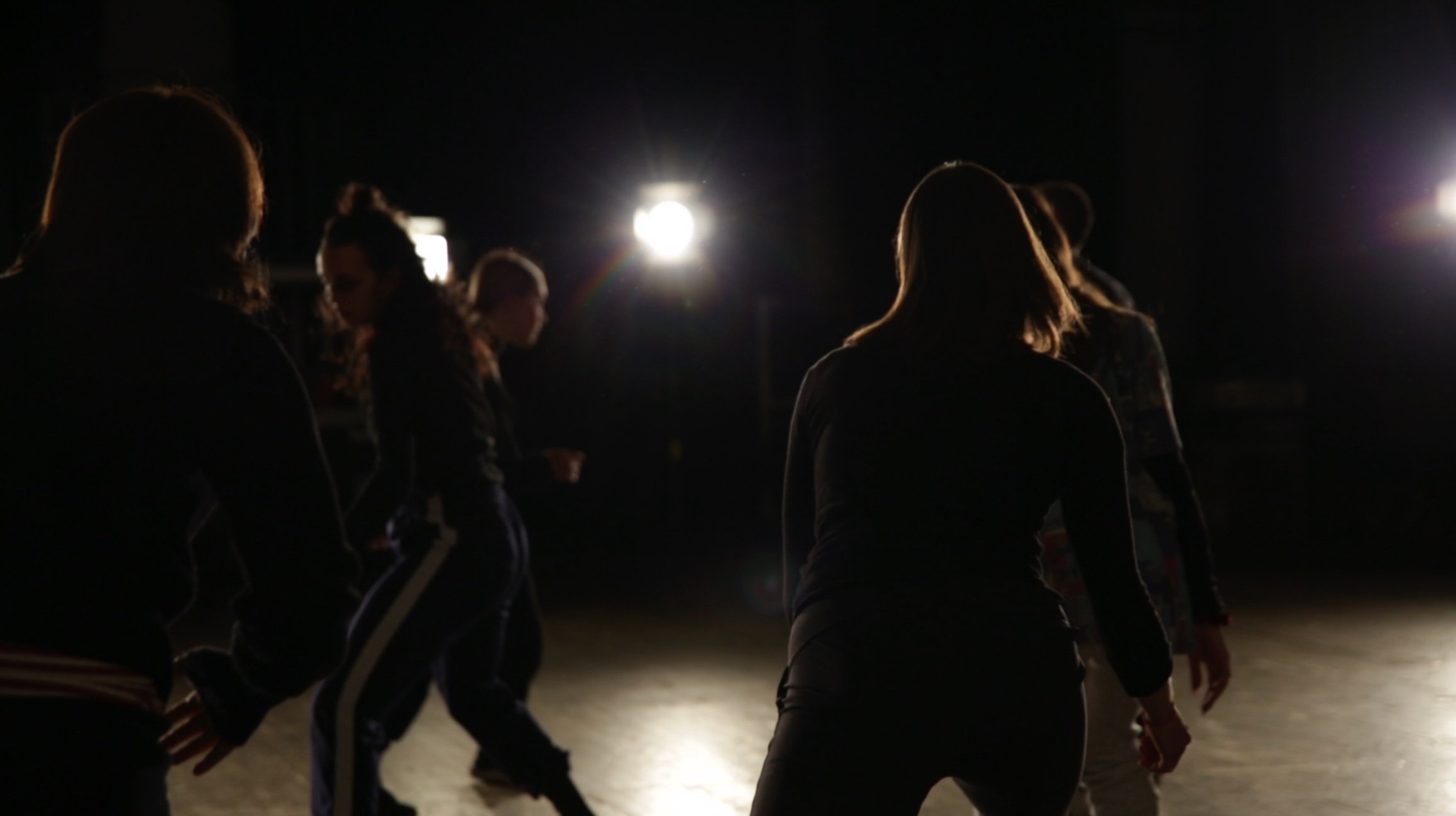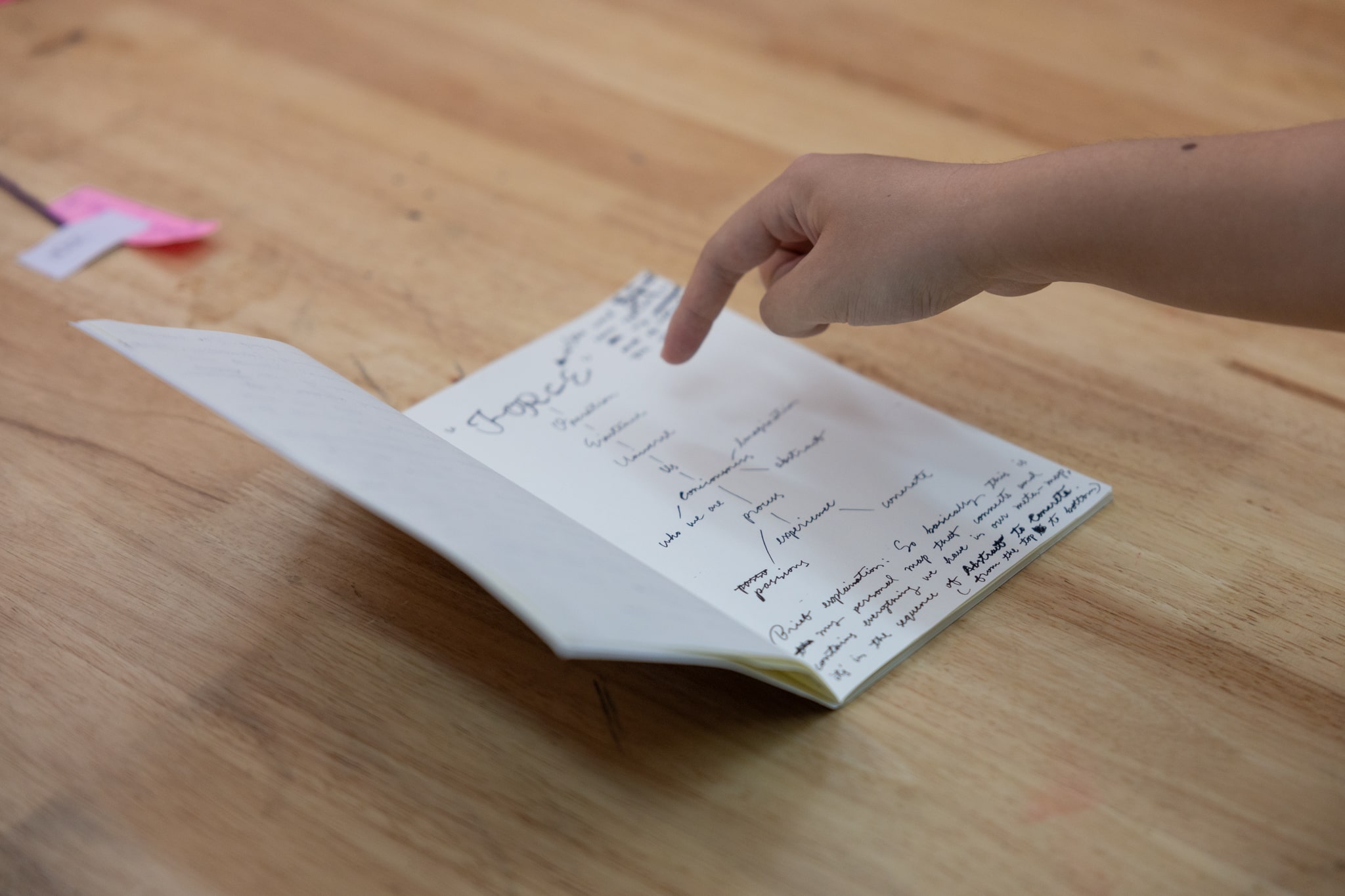
Curating Presence
Chiang Mai
2023
Curating Presence. A socially-engaged Introduction to curation, community arts and performance studies was the second part of Timothy's artist residency in August and September 2023. It is connected to the current research project Transient relations: towards a transindividual embodied research dispositive a first step to understanding systemic sustainability and intercultural exchange through the lens of social science and embodied cognition.
In collaboration with: Chiang Mai University, Faculty for Fine and Applied Arts (Kru Maymae/Piewwy Booranasakawee)
Concept and Idea: Timothy Nouzak
Artistic Documentation: Piewwy Booranasakawee
Weaving Presence concluded the first part of Timothy‘s artist residency in August and September 2023 connected to the current research project Transient relations: towards a transindividual embodied research dispositive, a first step to understanding systemic sustainability and intercultural exchange through the lens of social science and embodied cognition.
In collaboration with: PTIS - Prem Tinsulanonda International, ARThailand Chiang Mai and Artist Residency Thailand
Concept and Idea: Timothy Nouzak
Artistic Documentation: Woraphon Aintayot
Both research editions have happened within the framework of a two-part research residency in Bangkok and Chiang Mai, co-hosted by Chiang Mai University and ARThailand, where the focus was set on a guest lecture series that aimed to re-think social engagement and curation through the lens of performative practice. This focus also extended to a funded research project that Timothy is currently undertaking at the University of Applied Arts in Vienna. The idea of the guest lecture series was to share, dialogue, and contribute insights into the discourse on what performance and social engagement within art can be, and how they relate to oneself and current contemporary arts practices. The first part of the research residency culminated within the framework of 'Artist Residency Thailand (ART)', in collaboration with PTIS - Prem Tinsulanonda International and ARThailand in Chiang Mai. Here, the focus was on Dance and Embodiment as Catalysts for rethinking ways of knowledge production.
Funded research project at University of Applied Arts (Angewandte) through a collaboration between APL - Angewandte Performance Laboratory, HUFAK and the INTRA research project 'Archive in Practice’.
Project Lead: Charlotta Ruth, PhD and Timothy Nouzak
In collaboration with: Performatorium (Olivia Jaques and Marlies Surtmann), Mariella Greil, PhD and Jasmin Schaitl
Invited HOWTBT Artist Projects: Charlotte Bastam & Verena Frauenlob, Valentino Skarwan & Su Huber, Aleksandar Gabrovsky & Kaloyan Vasev and Shahrzad Nazarpour & Mortezad Mohammadi
Photo Documentation: Marlies Surtmann
Supported by: APL - Angewandte Performance Laboratory, HUFAK and the INTRA research project 'Archive in Practice’
„How We Ought To Be Together“ (HOWTBT) was driven by the overarching goal of rethinking university politics and student engagement through the perspective of socially-engaged practice.
The project incorporated a combination of artistic and scientific methodologies through embodied communication design and feedback practice by exploring alternative cultures of participation, fostering collective decision-making processes and creating an inclusive and empowering environment within and beyond the university. One of the goals was to provide project funding of approximately 1000 euros for each of the invited HOWTBT artists. Additionally, the project sought to integrate embodied feedback practices, drawing on the expertise of PhD researcher Jasmin Schaitl, who developed a specific vocabulary of feedback practice modalities tailored to the individual embodied needs of groups
Embodied communication design formed a thereby fundamental pillar of the HOWTBT project. By emphasizing the use of the body as a powerful tool for expression and connection, participants were encouraged to explore the intersections between art, communication, and social change. This approach allowed for a deeper engagement with diverse perspectives and facilitated the development of projects that resonated on a sensory and affective level. Through embodied communication design, participants aimed to refelect on traditional forms of communication, by inviting dialogue and reflection that extended beyond mere intellectual understanding.
Embodied communication design formed a thereby fundamental pillar of the HOWTBT project. By emphasizing the use of the body as a powerful tool for expression and connection, participants were encouraged to explore the intersections between art, communication, and social change. This approach allowed for a deeper engagement with diverse perspectives and facilitated the development of projects that resonated on a sensory and affective level. Through embodied communication design, participants aimed to refelect on traditional forms of communication, by inviting dialogue and reflection that extended beyond mere intellectual understanding.
More information can be found here.
Common-Works
2019-2021
![]()
© Wild Gallery Brussels
Common-Works is a guided space of exchange, a safe space, where a group of performers come together to improvise, share and experiment in order to find, on the basis of the ideas and concepts that circulated throughout the past editions of the score, a new possible access on what the next edition might be. The focus in the work lies in creating a safe and social space in order to develop a diverse array of conversational as well as practice-based strategies on how to share knowledge and formulate alternative representational structures in relation to the collective performing body.
2019-2021
© Wild Gallery Brussels
Common-Works is a guided space of exchange, a safe space, where a group of performers come together to improvise, share and experiment in order to find, on the basis of the ideas and concepts that circulated throughout the past editions of the score, a new possible access on what the next edition might be. The focus in the work lies in creating a safe and social space in order to develop a diverse array of conversational as well as practice-based strategies on how to share knowledge and formulate alternative representational structures in relation to the collective performing body.
© Wild Gallery Brussels
Common-Works is based on semi-improvised movement score practices, which define events and experiences in space through the act of repetition. In the context of a continuous dialogue with the collaborating performers, the immediate improvisational area is slowly being left behind and the work becomes repeatable: a so-called „edition“ is created. Each time the edition is created and rehearsed with a new group of performers.
Common-Works steadily oscillates between a process-based research where finite or productional aspects are being diverted and a performance practice that is shared within the frame of a public presentation. As such the project refers hereby to a multifaceted understanding of an audience: In the beginning the project is openly addressed to interested performers either via an open call or by a personal invitation on which basis they then might decide to join. Being part of the process, the agency for the invited performer changes to a collaborator. By continuing to develop ideas further, the collaborating performers start associate themselves with the works intent and aspirations, which subsequently is being shared with/ addressed to an audience - that is of an interested public that may already know prior editions. Processes of perception imply relation: By means of sensing and perceiving, it becomes a social container - a platform for exchange - that connects shared embodied availabilities.
Common-Works steadily oscillates between a process-based research where finite or productional aspects are being diverted and a performance practice that is shared within the frame of a public presentation. As such the project refers hereby to a multifaceted understanding of an audience: In the beginning the project is openly addressed to interested performers either via an open call or by a personal invitation on which basis they then might decide to join. Being part of the process, the agency for the invited performer changes to a collaborator. By continuing to develop ideas further, the collaborating performers start associate themselves with the works intent and aspirations, which subsequently is being shared with/ addressed to an audience - that is of an interested public that may already know prior editions. Processes of perception imply relation: By means of sensing and perceiving, it becomes a social container - a platform for exchange - that connects shared embodied availabilities.
Common-Works uses the contextual reference of the previous edition as a starting point in order to subsequently define new methods that can be applied artistically within discursive and emodied practices: What processes arise in us when we perceive movement? What relations are at stake while enacting or perceiving a dance together? How much does our own upbringing precondition the understanding of a dance?
When a new edition of Common-Works starts, we are inviting on behalf or in conversation with the collaborating institution a new group of performers that we have never worked before. After initiating the encounter we are re organizing a personal one hour (skype) conversation with each of the collaborating performers. We get to know their background and aspirations in the project, introduce them to the content of the work as well as ask them to provide a specific practice that they would like to share in the beginning. Then we start our approx. 14 day research creation where we work each day and „compose through conversation“, an artistic gesture of Common-Works that (in)forms the overall project: it gives value and trust in the methodologies that have accumulated throughout the past editions whilst still opting to emancipate and liberate the performer’s agency and make them trust in their own doing and problem solving trough a semi-improvisational enactment.
When a new edition of Common-Works starts, we are inviting on behalf or in conversation with the collaborating institution a new group of performers that we have never worked before. After initiating the encounter we are re organizing a personal one hour (skype) conversation with each of the collaborating performers. We get to know their background and aspirations in the project, introduce them to the content of the work as well as ask them to provide a specific practice that they would like to share in the beginning. Then we start our approx. 14 day research creation where we work each day and „compose through conversation“, an artistic gesture of Common-Works that (in)forms the overall project: it gives value and trust in the methodologies that have accumulated throughout the past editions whilst still opting to emancipate and liberate the performer’s agency and make them trust in their own doing and problem solving trough a semi-improvisational enactment.
Common-Works oscillates between an intimate, process-based research and a performative practice articulated within a public presentation:
Common-Works 6.8
Kortrijk
2021
![]()
Common-Works 5.4
Munich
2020
![]()
Common-Works 3.3
Toubab Dialaw
2020
© see picture property
Kortrijk
2021
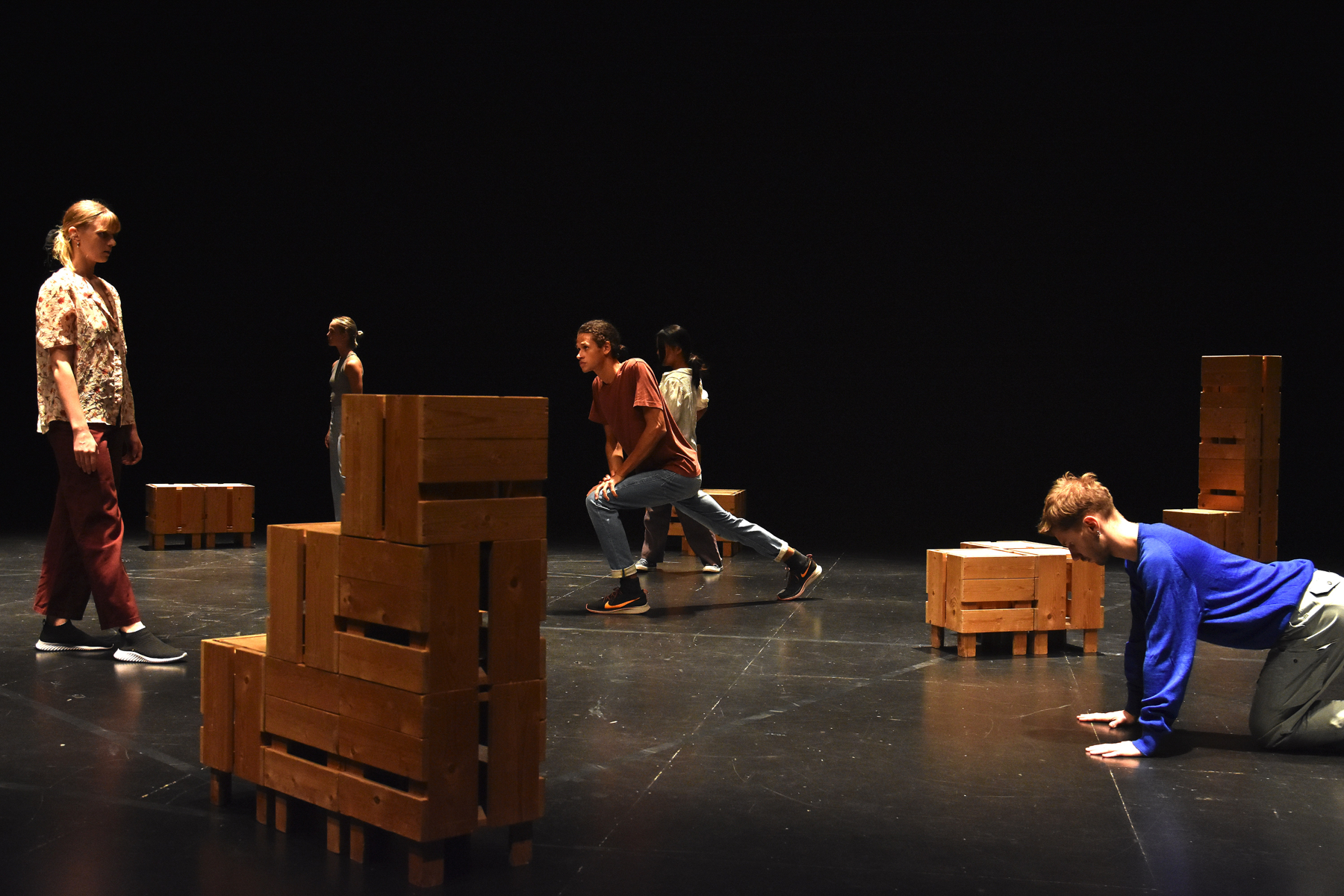
Common-Works 5.4
Munich
2020
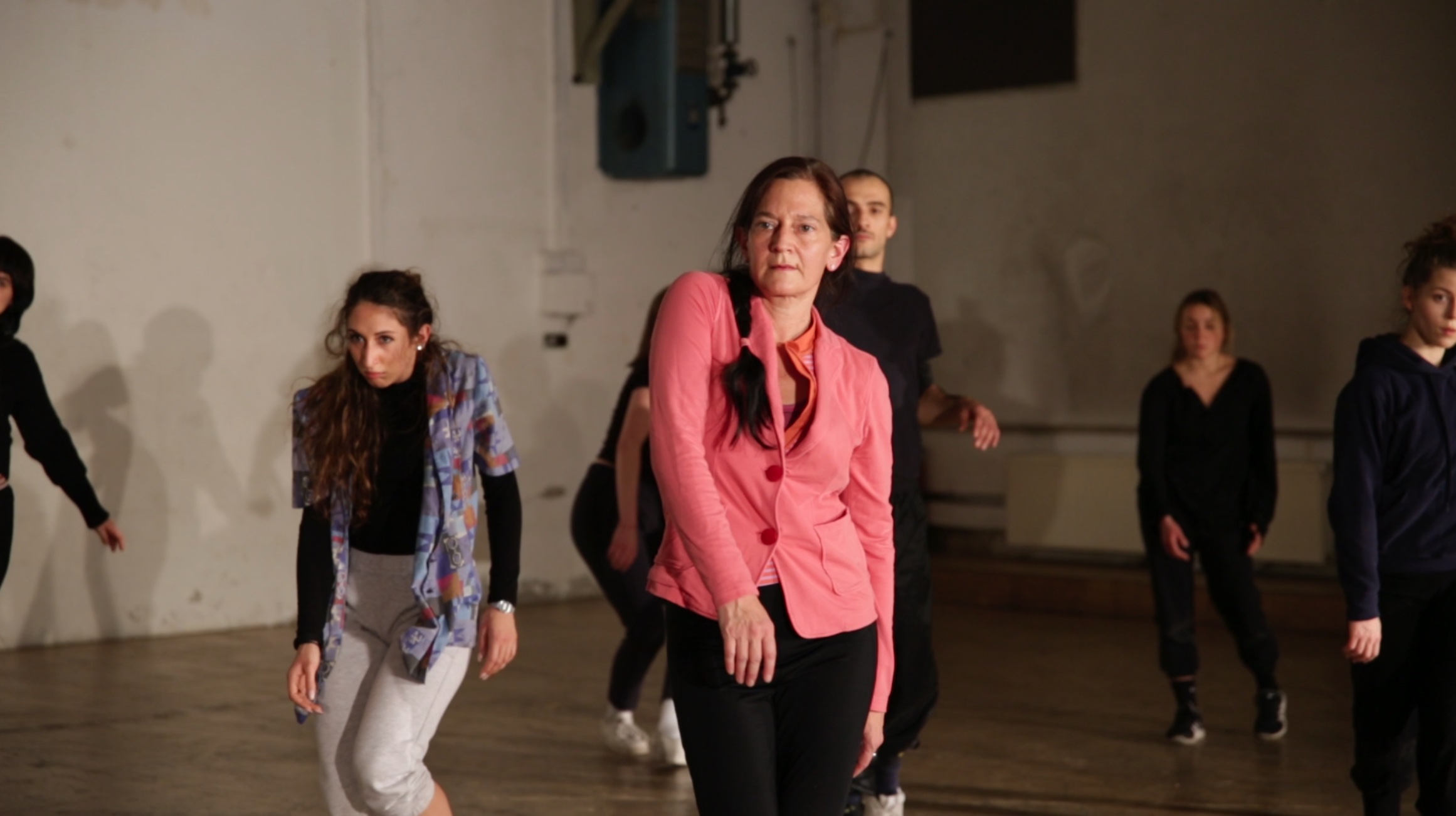
Common-Works 3.3
Toubab Dialaw
2020
© see picture property
Retro-Active Tendencies 2019-2020
Retro-Active Tendencies as a solowork-series strives to find various unspoken potentials, spaces-in-between where fiction and physical presence seem to be entangled, where dominant narratives of the past are suspended, where meaning has stripped off all of its nostalgia to the past by the very act of repetition, in order to create a place where history has to be denounced by being re-lived, where one starts to look back into the future - by bending back in order to relive the past.
Stripping away all the nostalgia from the act of repetition.. It could be [this].

© Mary Szydlowska
Semio-Rave 2019
Semio-Rave is an improvised collective movement/performance practice which lasts along a DJ-Mix of approx. 40-minutes. The practice consists of several modulesand is guided each time by a different person. The practice was developed out of two separate needs: On one hand, as a physical “coming together” focussing on the communal aspect of the group and on the other hand, as movement score that focusses on a physical listening of complex arrangements of rhythmical gestures. It has to date been (self-)organized in Brussels, Vienna, Berlin, Munich and Taipei.






